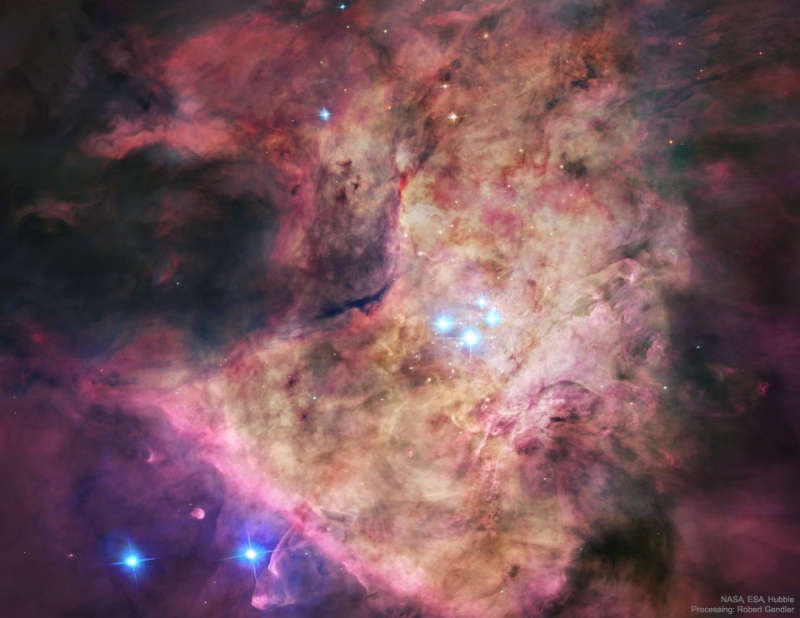 |
Астронет: Астрономическая картинка дня Трапеция: в сердце Ориона http://variable-stars.ru/db/msg/1427507/eng |
Credit & Copyright: Data:
Hubble Legacy Archive,
Processing:
Robert Gendler
Explanation:
Near the center of this sharp cosmic portrait, at
the heart of the Orion Nebula,
are four hot, massive stars
known as
the Trapezium.
Gathered within a region about 1.5 light-years in radius,
they dominate the core of the dense Orion Nebula Star Cluster.
Ultraviolet ionizing radiation from the
Trapezium stars,
mostly from the brightest star
Theta-1
Orionis C
powers the complex star forming region's entire visible glow.
About three million years old, the Orion Nebula Cluster was
even more compact in its younger years and a
recent dynamical study indicates that
runaway stellar collisions
at an earlier age may have formed a black hole
with more than 100 times the mass of
the Sun.
The presence of a
black hole within the cluster
could explain the observed high velocities of the
Trapezium stars.
The Orion Nebula's distance of some 1,500
light-years would make it the
closest known black hole to planet Earth.
APOD Event:
APOD Editor to speak at Fermilab on August 8
Authors & editors:
Robert Nemiroff
(MTU) &
Jerry Bonnell
(USRA)
NASA Web Site Statements, Warnings,
and Disclaimers
NASA Official: Jay Norris.
Specific
rights apply.
A service of:
LHEA at
NASA /
GSFC
& Michigan Tech. U.
